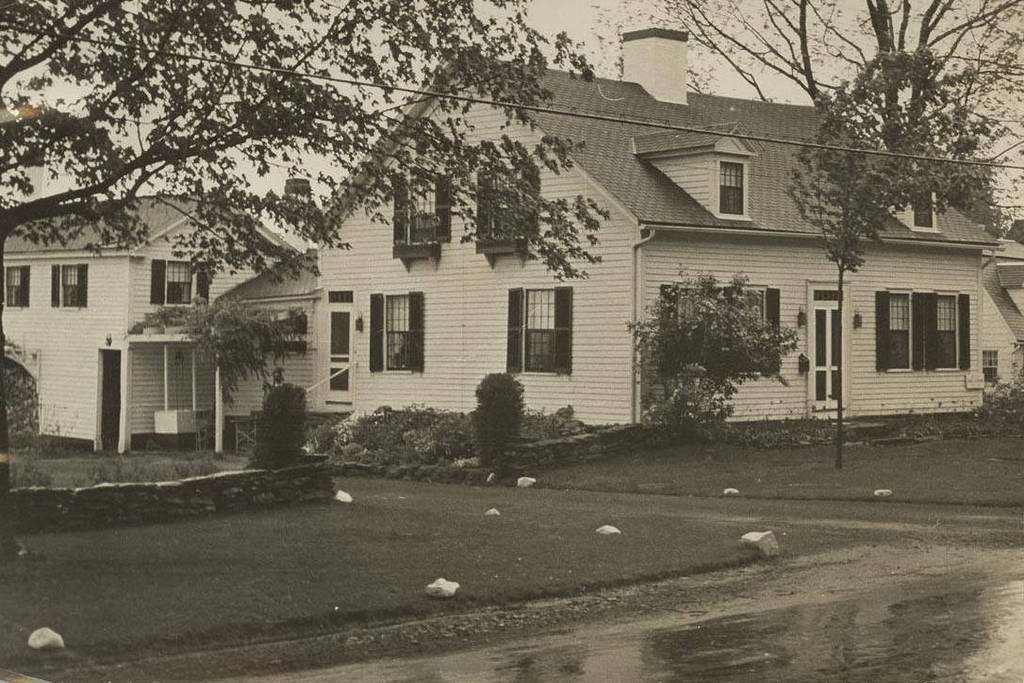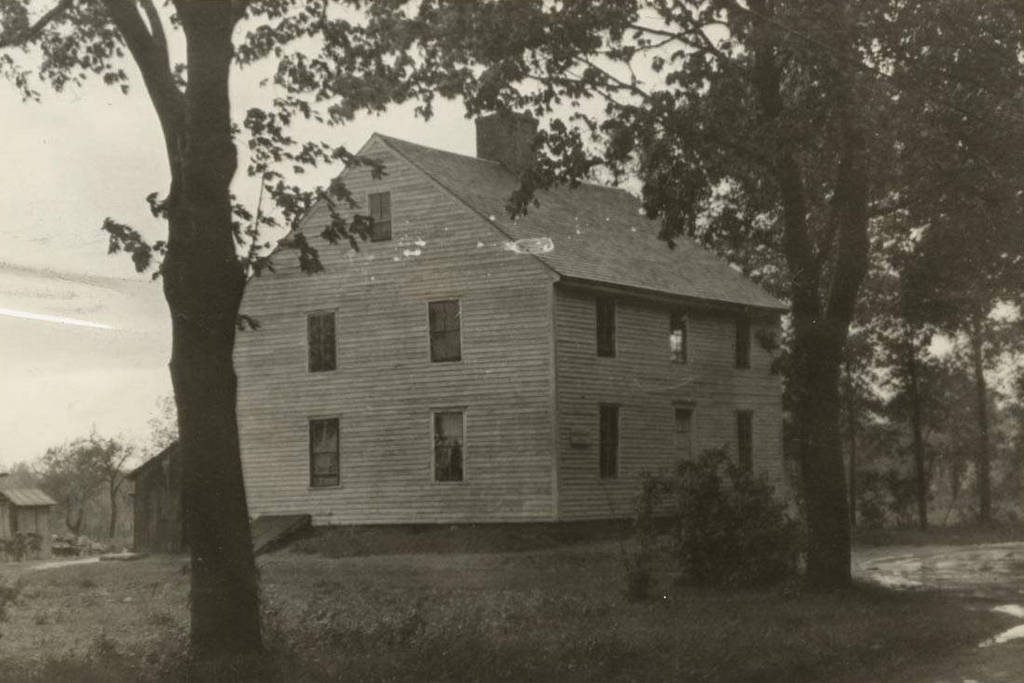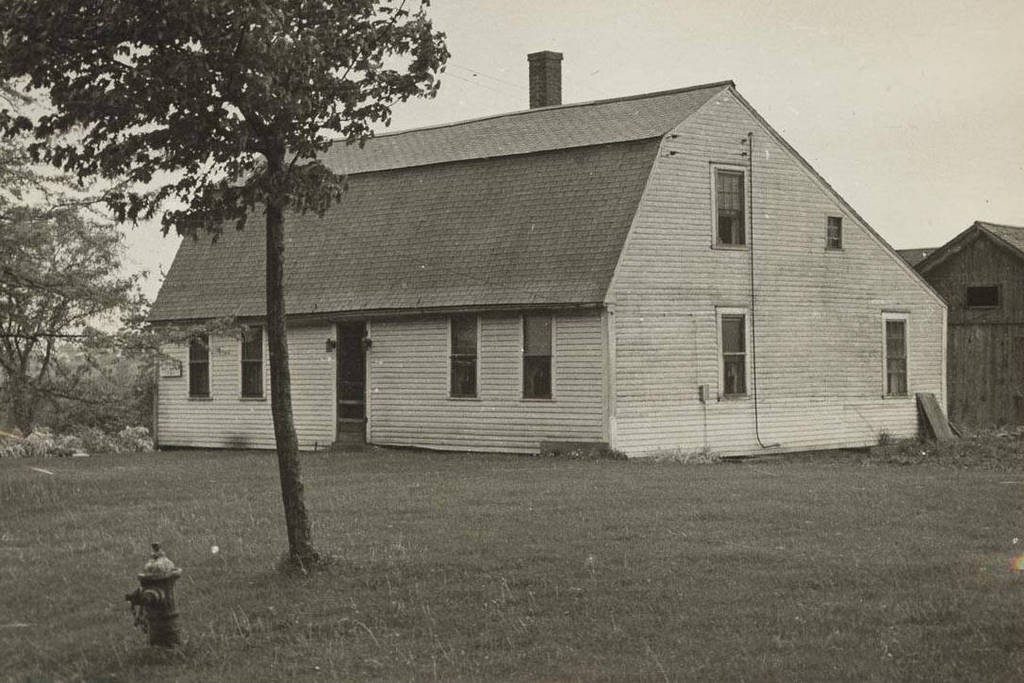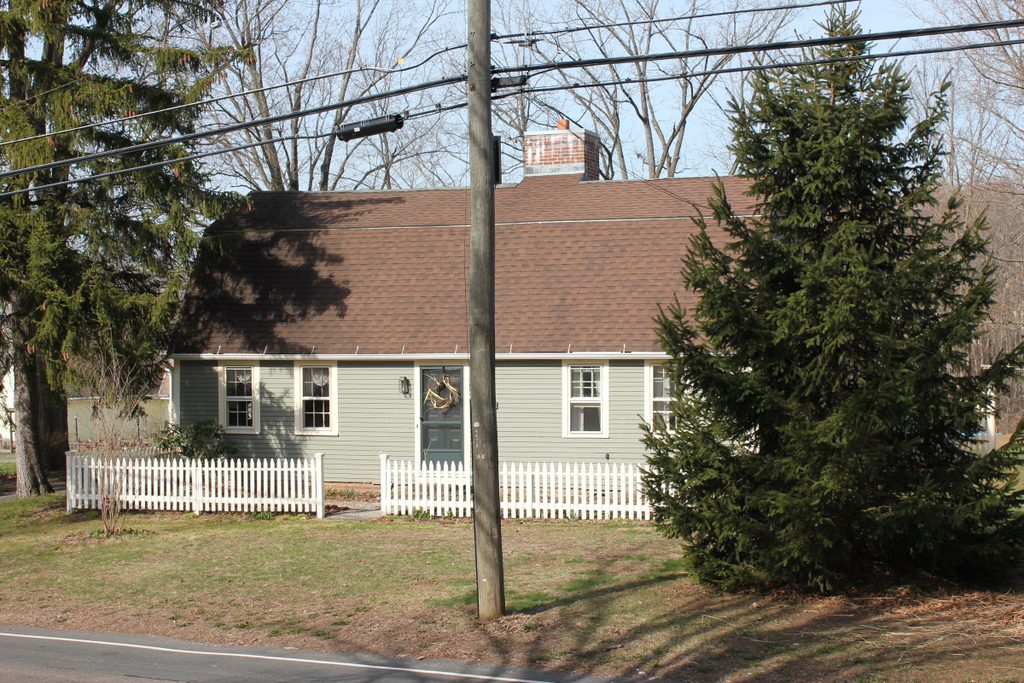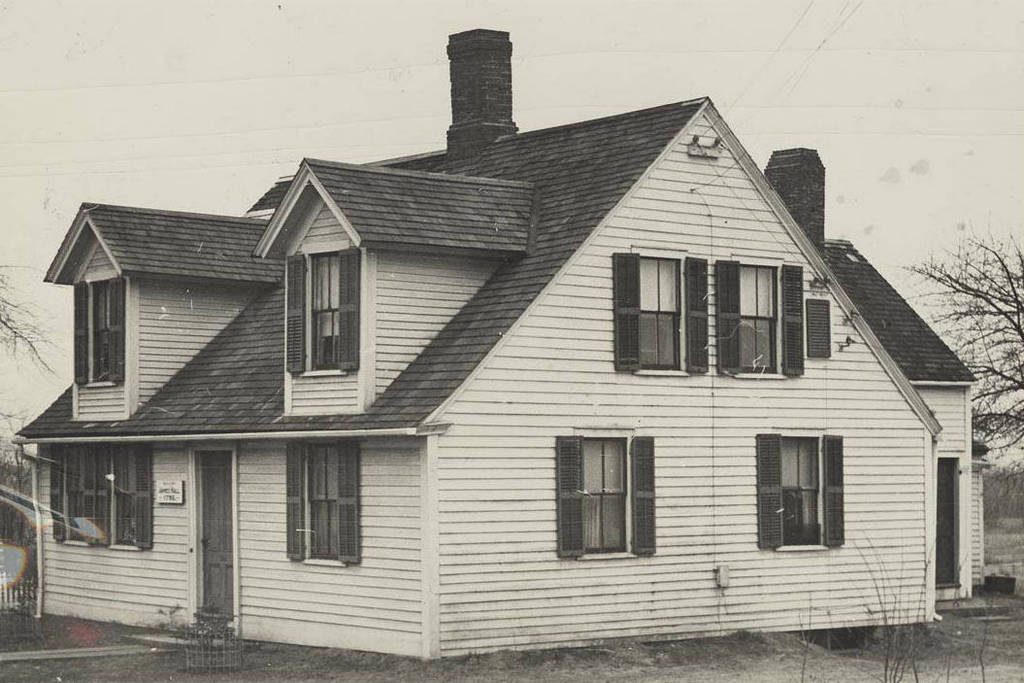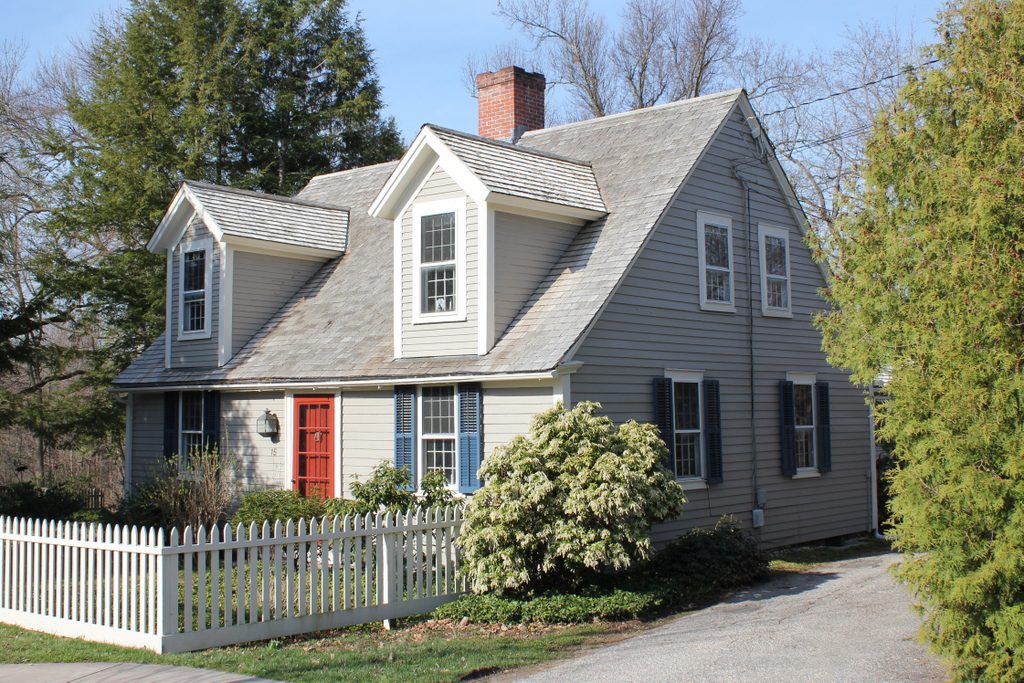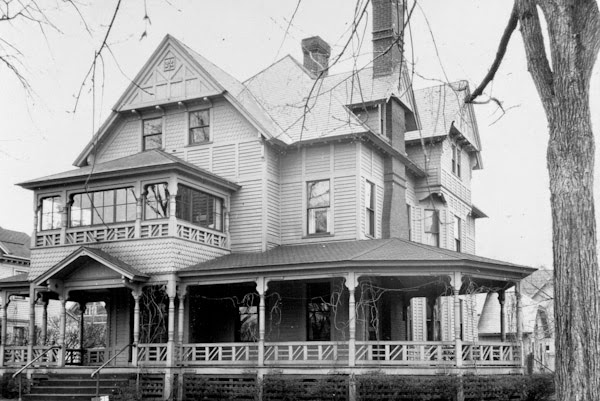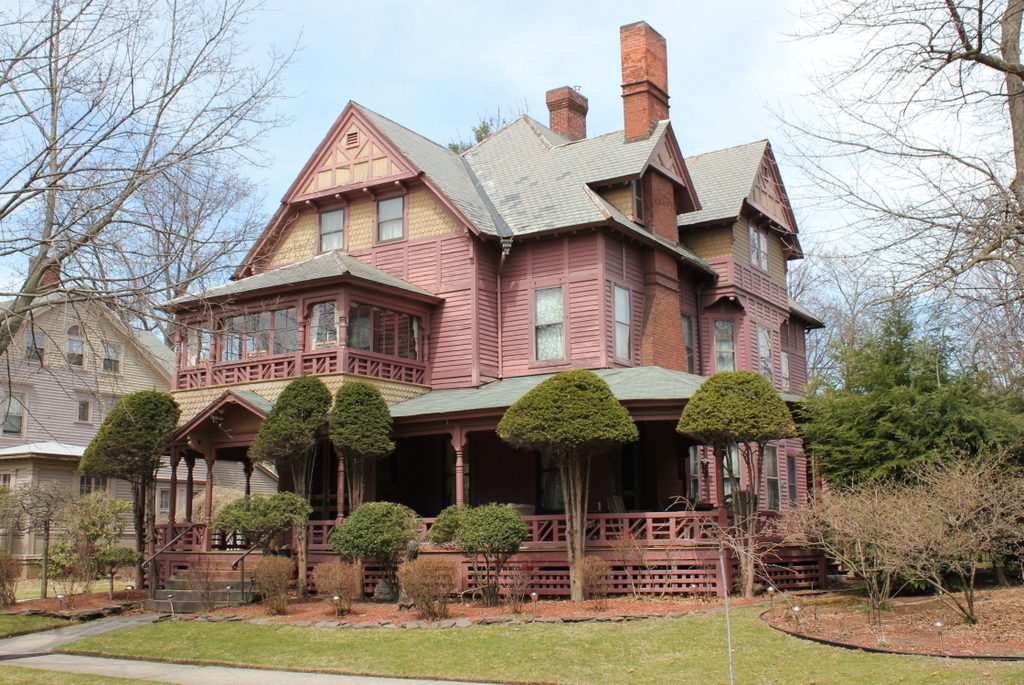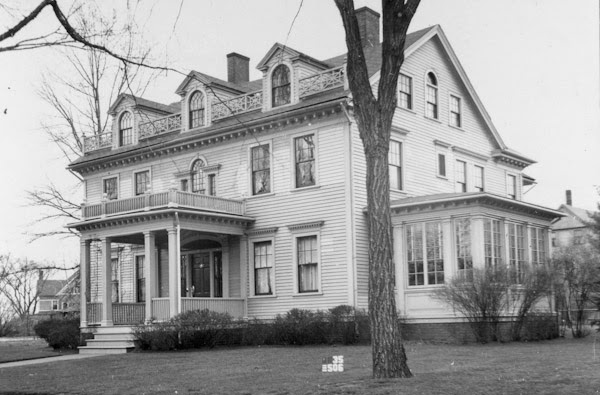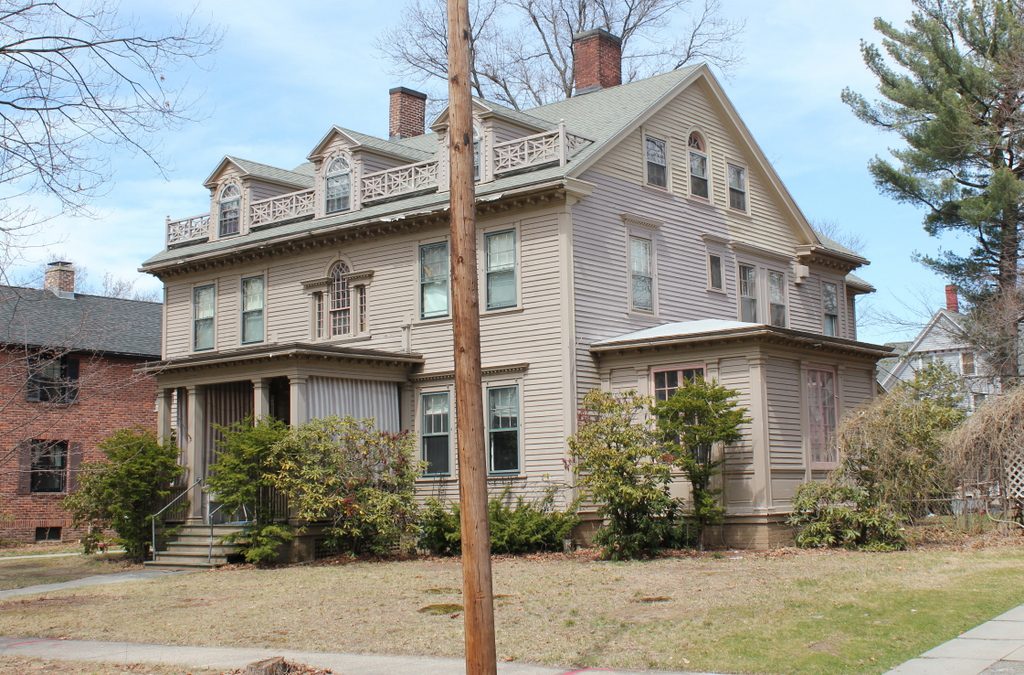The house at 391 South Main Street in Suffield, around 1935-1942. Image courtesy of the Connecticut State Library.
The house in 2017:
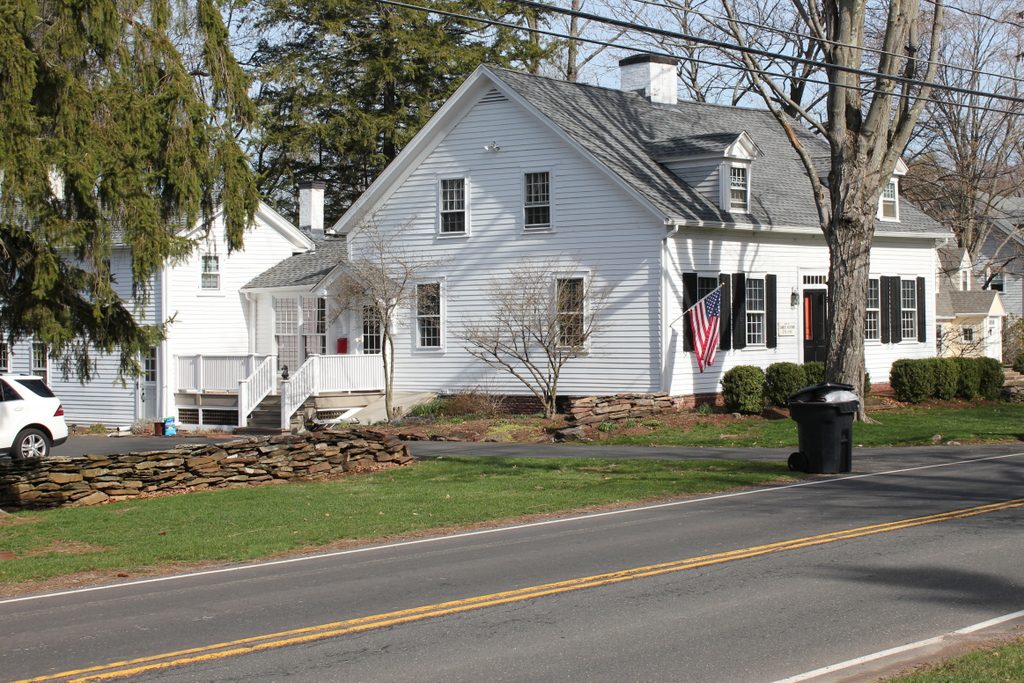
Samuel Hathaway was born around 1690 in Taunton, Massachusetts, but by 1719 he had moved to Suffield, where he married Sarah Rowe. He built this house sometime between 1720 and 1740, and he and Sarah raised their eight children here. During this time, he held several different town offices, including as a selectman and a highway surveyor. He was also involved in iron manufacturing, with a mill here in Suffield as well as ones in Willimantic and New Milford.
His businesses were evidently prosperous, because upon his death in 1765 his estate was valued at £1772, an impressive sum for the day. Samuel’s youngest son, Asahel, was also a leading resident of Suffield. A Yale graduate, he was a pastor for a short time before returning to Suffield, where he became a farmer and merchant. Around the turn of the 19th century, he purchased the mansion of Oliver Phelps, a Suffield landmark that remained in his family for many years.
Over the years, Samuel Hathaway’s former house has been expanded several times in the back, but it remains standing as one of the oldest houses in Suffield. Its construction even predates Suffield’s annexation to Connecticut, because prior to 1749 the town was part of Massachusetts. By the time the first photo was taken, the house was already around 200 years old, and very little has changed with the exterior since then. The house is now part of the Suffield Historic District on the National Register of Historic Places.

